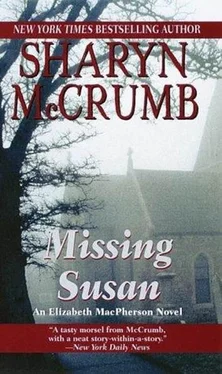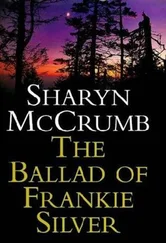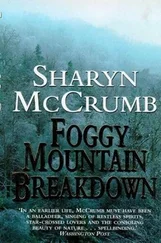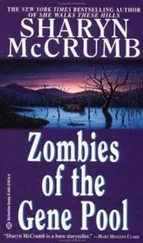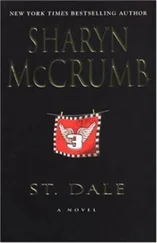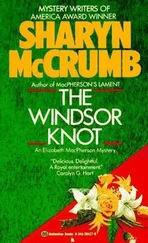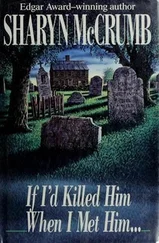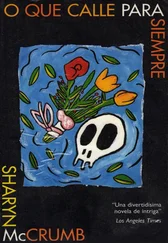Sharyn McCrumb - Missing Susan
Здесь есть возможность читать онлайн «Sharyn McCrumb - Missing Susan» весь текст электронной книги совершенно бесплатно (целиком полную версию без сокращений). В некоторых случаях можно слушать аудио, скачать через торрент в формате fb2 и присутствует краткое содержание. Жанр: Детектив, на английском языке. Описание произведения, (предисловие) а так же отзывы посетителей доступны на портале библиотеки ЛибКат.
- Название:Missing Susan
- Автор:
- Жанр:
- Год:неизвестен
- ISBN:нет данных
- Рейтинг книги:3 / 5. Голосов: 1
-
Избранное:Добавить в избранное
- Отзывы:
-
Ваша оценка:
- 60
- 1
- 2
- 3
- 4
- 5
Missing Susan: краткое содержание, описание и аннотация
Предлагаем к чтению аннотацию, описание, краткое содержание или предисловие (зависит от того, что написал сам автор книги «Missing Susan»). Если вы не нашли необходимую информацию о книге — напишите в комментариях, мы постараемся отыскать её.
Missing Susan — читать онлайн бесплатно полную книгу (весь текст) целиком
Ниже представлен текст книги, разбитый по страницам. Система сохранения места последней прочитанной страницы, позволяет с удобством читать онлайн бесплатно книгу «Missing Susan», без необходимости каждый раз заново искать на чём Вы остановились. Поставьте закладку, и сможете в любой момент перейти на страницу, на которой закончили чтение.
Интервал:
Закладка:
She commandeered a table for her research, stacking all her parcels in a vacant chair, and setting the books and papers around her while she took notes, pawing through first one source and then another. As the minutes passed, she found the scene beginning to take shape in her mind, as if it were a play she half remembered.
There was Constance Kent, a pretty adolescent looking a bit like the young Princess Anne, turning her profile before the camera with a winsome smile. She wore a stylish brimmed bonnet that curled over the chignon at the nape of her neck, and her girlish figure was shrouded beneath the folds of a tentlike duster coat. Was that before the murder? Difficult to determine her age from that one surviving photograph, but it was a pleasant face, seeming both sensitive and intelligent.
Elizabeth thought of the surly pouts on the faces of other murderesses she had studied: Lizzie Borden with her goose-berry eyes and her pugnacious sneer; the vacant stare of husband-poisoner Adelaide Bartlett; the tight-lipped scowl of Glasgow’s Madeleine Smith, who dosed her lover with arsenic. The shy smile of Constance Kent looked out of place among the faces of these older, harder women. Yet all of them had been acquitted (wrongly, Elizabeth was sure), and little Constance had been sent to prison.
What had happened at Road Hill House, a few miles south of Bath, on the night of June 29, 1860?
Elizabeth searched the sources for a list of the occupants of the house on that fatal night. Constance was there, of course. She was sixteen years old, living with her father Samuel and his new wife, the former governess Mary Pratt. There was a new young governess now, Elizabeth Gough, who took care of Mr. Kent’s children by his second wife: Amelia, five; Francis, three and one half; and the baby Eveline. There were also three older children, Constance’s full siblings, who slept on the third floor of the house, as did Constance, the cook, and the maid.
“That shows you where they stood in the pecking order,” Elizabeth muttered, noting down the locations of the rooms. The small children slept in the second-floor nursery with Miss Gough.
On the morning of June 30, 1860, Elizabeth Gough awakened at seven to find that the little boy was missing from his bed. When she knocked at his parents’ door to ask if Mrs. Kent had taken the child during the night, she was told that the Kents had not seen the child since his bedtime the night before. Mrs. Kent was angry with the distraught nursemaid. Mr. Kent lay in bed with his eyes closed, silent but not asleep.
The search was on.
The older Kent daughters came down from their rooms and two of them became quite upset at the news that their half brother was missing. Constance, however, stood silently composed. The third-floor sleepers all maintained that they had slept through the night without hearing any disturbance, but the maid did recall that when she had gone downstairs at five that morning a window was open, and the door was ajar.
“I wonder if she was the suggestible type,” Elizabeth mused. “Next she’ll be claiming she saw tramps lurking around the grounds.”
When a search of the house failed to turn up the missing child, Mr. Kent finally got up, called for his pony and trap, and set off to inform the police. Elizabeth pictured Samuel Kent, a pompous and selfish man of fifty-nine, enraged at this domestic upheaval that inconvenienced him, and perhaps terrified at the prospect of having lost his son. He was a lavish spender, eager to impress the world with his fine horses and fashionable clothes, but his squandering left the house short-staffed and sometimes created hardships for his family. Servants kept leaving because he worked them too hard and paid too little.
“Apparently the governess did double duty,” drawled Elizabeth, thinking of Kent’s hasty marriage to twenty-one-year-old Mary Pratt after the death of his first wife.
Perhaps now the paterfamilias wished that he’d had fewer waistcoats and more servants. Perhaps, as he hurried along the four-mile stretch of road to Trowbridge, he wondered if any of his neighbors had killed the child for revenge. Samuel Kent had prevented the neighbors from fishing in the river near his rented mansion and he had prosecuted some local boys for theft. Besides, tongues were still wagging about his second marriage. Samuel Kent was not a popular man locally.
While he was gone to summon the police, two farmworkers who had joined in the search for the missing child found Francis Savile Kent’s body. It was wrapped in his own crib blanket and stuffed behind the splash board in the outdoor privy a hundred yards or so from Road Hill House. The boy’s body bore a deep stab wound between the ribs and his throat had been slashed from ear to ear.
Elizabeth shivered. “Three and a half years old,” she murmured, picturing the sturdy toddler. The little boy in the apartment next to theirs in Edinburgh was three. Judging from that child’s development, Savile should have weighed more than thirty pounds, and he would have been talking clearly and in complete sentences.
After an hour or so, Samuel Kent returned with two Trowbridge policemen, whom he proceeded to supervise in their investigation. He ordered them to search the grounds and the outbuildings, and he accused his neighbors of killing the child over the fishing rights squabble. Then he suggested Gypsies might have done it. The police were allowed to search the servants, not the family.
“I wonder if he suspected his daughter?” Elizabeth said. “He didn’t want to believe it. That’s for sure.” She read on quickly to see what evidence their search uncovered.
They inspected the child’s bed and found that he had been suffocated there. The mattress and pillow showed deep impressions of Savile’s head and thigh, as if someone had held him down, pushing very hard to smother him. Although the blanket from the bed had been used to wrap the body, the bed had been carefully remade to look undisturbed, so that the marks of the murder were not at first apparent. They also determined that Savile was already dead when his throat was cut in the outside privy.
In a search of the house, the officers found a bloodstained shift of coarse material, stuffed in the back of the scullery boiler. A shift, Elizabeth knew, was a sort of slip that might be worn as a nightgown or as an undergarment. “Oh-ho,” said Elizabeth. “Wouldn’t I like to run tests on those bloodstains.” When was this? Eighteen sixty. It was another thirty years before Paul Uhlenhuth discovered the way to differentiate between human and animal blood. She wondered if they still had that shift.
As if anticipating her curiosity, the next sentence stated that the shift was subsequently lost before its owner could be identified. “The police obviously didn’t secure the area back then,” Elizabeth muttered. “Mr. Kent again?”
The officers did manage to determine that the shift was not the only missing garment in the case. Mrs. Holly, the village laundress, reported that when she received the washing from Road Hill House on the day of the crime, the laundry list indicated that three nightdresses were sent, but she only found two among the soiled clothing. The missing one belonged to Constance.
When after two weeks the local constabulary had made no headway with the case, Scotland Yard sent down Inspector Jonathan Whicher to take over. Perhaps because of the missing nightdress and the tales of a runaway Constance four years earlier, the inspector fixed his suspicions on the sixteen-year-old girl, but he also thought the nursemaid might be guilty. After questioning both, the nursemaid was let go and Constance was arrested and charged with the murder of her half brother.
She appeared before local magistrates on July 27 and Whicher’s scant and circumstantial evidence was presented. Perhaps he hoped that under the pressure of a hearing she would confess to the crime, but she did not. She sat with her black-gloved hands folded and listened calmly to her school-friends testify that she had disliked her stepmother and had found her young half brother annoying.
Читать дальшеИнтервал:
Закладка:
Похожие книги на «Missing Susan»
Представляем Вашему вниманию похожие книги на «Missing Susan» списком для выбора. Мы отобрали схожую по названию и смыслу литературу в надежде предоставить читателям больше вариантов отыскать новые, интересные, ещё непрочитанные произведения.
Обсуждение, отзывы о книге «Missing Susan» и просто собственные мнения читателей. Оставьте ваши комментарии, напишите, что Вы думаете о произведении, его смысле или главных героях. Укажите что конкретно понравилось, а что нет, и почему Вы так считаете.
